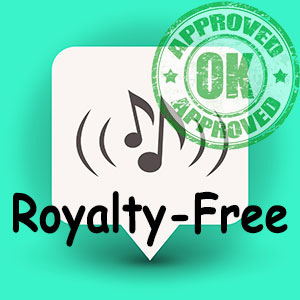
What is royalty free music? Is it free? Do I need some?
To answer those questions in order:
- You’ll find out in this post
- No (at least not usually)
- Yes
So What Is Royalty Free Music?
It is music you can download and use in your recordings without having to worry about violating copyright.
The reason for that is that royalty free music has already been approved to be used in this way. The license has been approved for anyone to use.
Why Would I Want Royalty Free Music?
One way to truly give voice-over audio a professional edge is to put some background music behind it. It has never been easier or less expensive to obtain high quality music files to use in your productions. There are background music downloads and even free royalty free music all over the web these days.
So you’re sold already huh? You’re already on to “how do I get me some?”
OK, since it is so easy and quick…just go to Google and type in “royalty-free music,” and you’ll be presented with tons of links to sites where you can download program music. Or try one of my favorites, Shutterstock Music or AudioMicro. Some will cost a few bucks per file, some will be free. There. Go play.
What Does Royalty Free Mean?
For the rest of you there may be more questions…such as “what does royalty-free mean?” or “is it legal to use someone else’s music in my productions?” Good questions! “Royalty-Free” means that you do not have to pay royalties to use this music in your production, as you normally would if you wanted to use someone else’s music.
For example, you cannot just use an mp3 of a Beatles song in your podcast without paying royalties to the publisher. Good luck! With royalty-free music, there is no such hassle. You should read the fine print though. There are usually restrictions on things like turning around and selling someone else’s file of RF music on its own, say as part of a collection of RF music. As long as you add something to it, like a voice narration, etc. you should be fine.
Another burning question you may have is: “what are some good uses of RF music?” Another good question. One very common use is as background for a voice narration for intros (and outros) for podcasts, radio shows, or other types of audio programs. Also, the same thing is usually done in videos. Adding good quality music to a short video on the web can really make the difference between seeming professional and not. And let’s not forget about radio and television commercials. When was the last time you heard one of those without music?
How Do I Use It?
Okay, so now you have a few files of RF music and you don’t know how to put it “behind” your voice? No problemo. If you don’t already have audio software that can do multi-track recording, just download the open-source program called Audacity from their website at Sourceforge. It is free of charge and quite powerful. Then record your voice on a track in Audacity. Then create a second track right under the first one with the voice on it in Audacity and insert your RF music file on it. When you play that back, you’ll hear both. Now all you have to do is set the volume on the music so it doesn’t drown out your voice, and skidoosh, you have background music behind your voice. Then just export a stereo audio file (wav, mp3, etc.) from Audacity.
As I mentioned earlier, there are several sources for royalty-free music out there on the web, including Home Brew Audio, where you get several for free. Have fun!
Ken